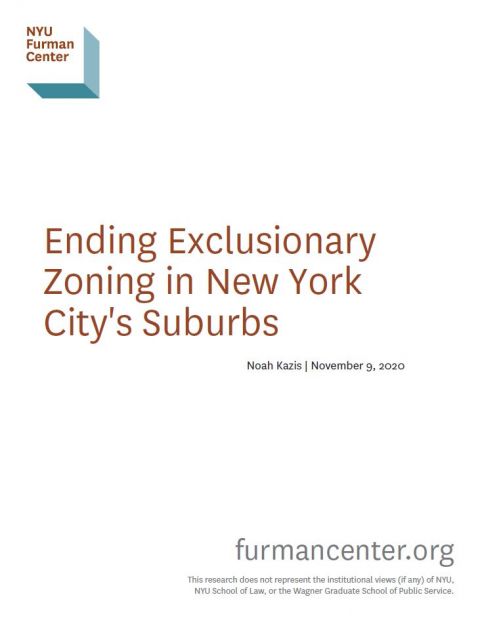Publication
Ending Exclusionary Zoning in New York City’s Suburbs
New York stands alone among its peer states—coastal states with high housing costs and healthy regional economies—in giving its local governments such broad authority over local land use. The result is a state with fewer homes, more expensive rents, and starker segregation than it would otherwise have. By some measures, New York has the most exclusionary zoning in the country. This paper offers a guide for New York State to follow, and improve upon, its peer states and reform its broken suburban land use process.
This paper proceeds in five parts. First, it explains the costs of overly restrictive land use regulation, including decreased housing affordability, harms to the regional and national economies, increases in segregation and inequality, and adverse environmental outcomes. Second, it demonstrates that New York City’s suburbs have failed to provide badly-needed housing. National data on population trends, housing prices and building permits; fair housing litigation; and case studies of particular suburban land use regimes all show the same thing: New York’s suburbs are not building their fair share of housing. Third, it argues why the state must intervene. Local governments lack the capacity or incentives to make these changes on their own. As other states have realized, reforming suburban land use is a matter for the state government. Fourth, it offers a menu of interventions that have been adopted in other states. These offer both models for New York State and a framework of options for lawmakers to develop a customized state solution. Finally, this paper lays out a series of questions for policymakers to ask in developing a state-level response.



